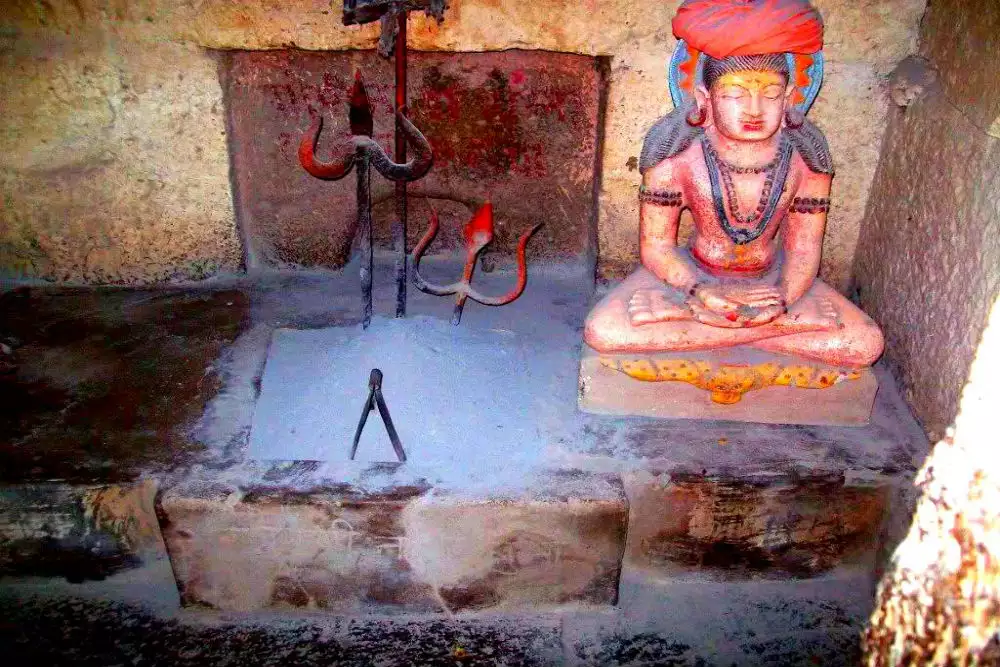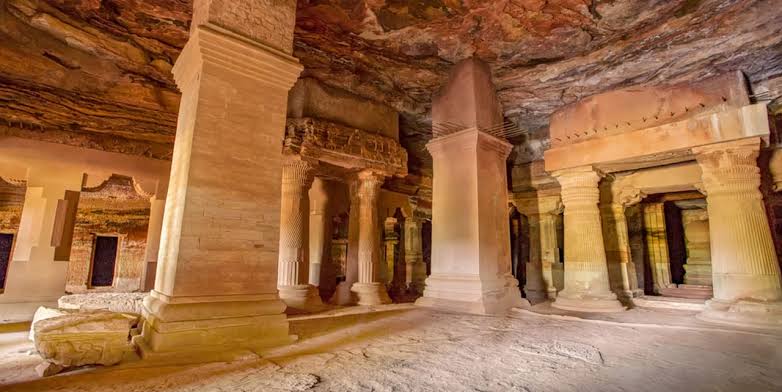
History and Significance
The exact date of the Bhartrihari Caves' construction remains shrouded in the mists of time. Historical estimates suggest they were carved sometime between the 2nd century BCE and the 7th century CE. Attributing the caves to a specific period or kingdom is challenging due to the lack of inscriptions or definitive archaeological evidence.
Legends abound regarding the caves, the most prominent linking them to the renowned Sanskrit poet Bhartrihari. Bhartrihari, known for his poignant verses reflecting on love, loss, and detachment from worldly pursuits, is believed to have spent his later years in these caves, meditating and composing his poetry. However, concrete historical proof to support this association is absent.
Another legend suggests that the caves were used by Jain monks as a place for meditation and spiritual practice. The presence of some Jain iconography within the caves lends credence to this theory. Additionally, the caves might have served as dwellings for ascetics and hermits seeking solace and seclusion.
The architectural style of the Bhartrihari Caves is relatively simple yet intriguing. There are three main caves carved into the sandstone cliffs, each with a single chamber. The entrances are rectangular, and the interiors are devoid of elaborate ornamentation. Some of the caves feature pillared verandahs offering panoramic views of the surrounding landscape. The austere nature of the caves reflects their potential use for meditation and contemplation.

Importance:
The Bhartrihari Caves hold significance for various reasons. They stand as a testament to the ancient rock-cut architecture prevalent in India, offering valuable insights into the artistic and engineering skills of the time. The caves also hold archaeological and historical importance, potentially revealing details about the religious practices and lifestyles of past inhabitants.
For those interested in literature, the Bhartrihari Caves hold an undeniable appeal. The association with the poet, even if not historically proven, adds a layer of intrigue and invites visitors to imagine Bhartrihari composing his verses within these cave walls. The serene atmosphere provides a perfect setting for contemplating the themes of love, loss, and renunciation explored in his poetry.
The Bhartrihari Caves also hold significance for spiritual seekers. The caves' tranquil environment, away from the city's bustle, offers a space for meditation and reflection. The lack of ornamentation and focus on simplicity resonate with the principles of detachment and inner exploration.
Planning Your Visit :
The Bhartrihari Caves are located approximately 8 kilometers from the heart of Ujjain. They are easily accessible by rickshaw or taxi. It's advisable to wear comfortable shoes suitable for uneven terrain, as the climb to the caves involves navigating a few steps. The caves are open to the public throughout the day, though the recommended visiting hours are between sunrise and sunset for optimal lighting conditions.
What to Expect and Enjoy :
A visit to the Bhartrihari Caves offers a unique experience, combining historical exploration with a touch of mystery. Climbing up to the caves rewards you with breathtaking views of the surrounding landscape. Exploring the simple yet intriguing cave interiors allows you to contemplate their potential uses throughout history.
Engaging a local guide can provide valuable insights into the legends and historical theories surrounding the caves. The tranquil atmosphere invites moments of reflection and introspection, making it a perfect destination for those seeking a break from the city's vibrancy.
Overall, the Bhartrihari Caves offer a window into Ujjain's ancient past, sparking your imagination and leaving you with a sense of intrigue. While the definitive story behind their creation might remain elusive, their enduring presence continues to captivate visitors and inspire exploration.
Explore Other Attractions in Ujjain
Ujjain is a city full of history, culture, and spirituality. After exploring this site, make sure to visit these other remarkable attractions:
- Sandipani Ashram: A sacred site where Lord Krishna, Balram, and Sudama are believed to have received their education. The ashram's peaceful surroundings make it a spiritual haven.
- Kaliadeh Palace: An architectural marvel on the banks of the Shipra River, showcasing Persian-style design and offering a glimpse into Ujjain's royal history.
- Vikram University: Named after the legendary King Vikramaditya, this renowned institution is a landmark of education and culture in Ujjain.
- Triveni Museum: Home to exquisite artifacts, sculptures, and exhibits that narrate the rich history and art of Ujjain.
- Jantar Mantar: An ancient observatory that highlights India’s advanced astronomical and timekeeping expertise.
- Main Ghats: Visit the sacred ghats along the Shipra River, where rituals, prayers, and a serene atmosphere create a divine experience.
